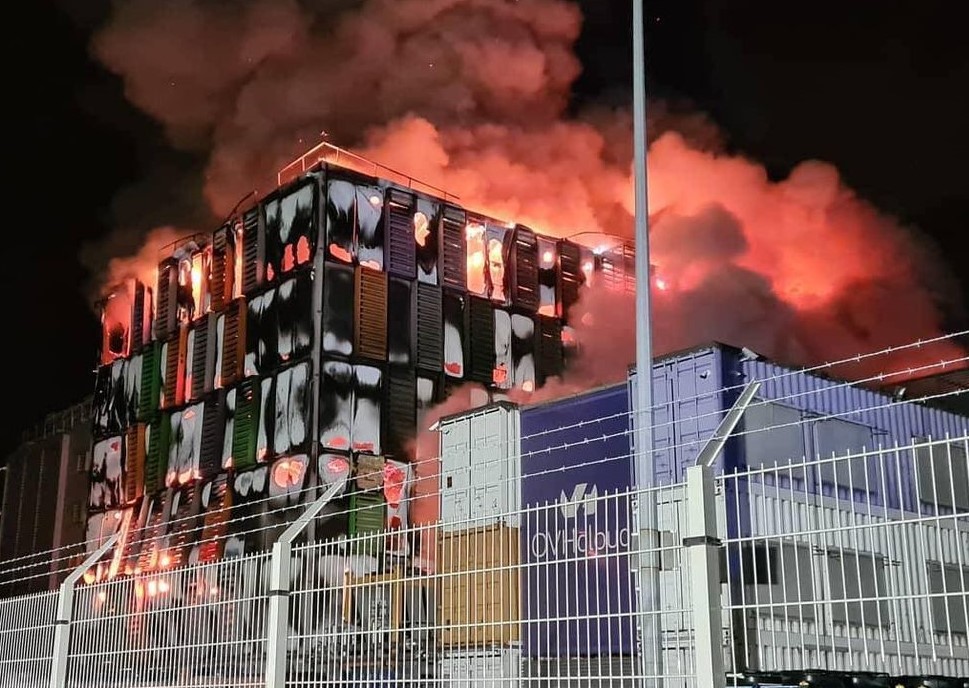
One of the most concerning pieces of news in the hosting industry over the last few weeks has been that of a fire in the Strasburg data centre complex belonging to the French cloud hosting provider OVH. Though there’s as yet no word from fire investigators on the cause It’s reported online as having started in a recently-maintained uninterruptible power supply system, and from there it spread to destroy the entirety of one data centre and part of another adjacent one. It’s probably the worst nightmare for a data centre manager, and the entire industry will no doubt have anxiously reviewed their own fire prevention strategies in its wake.
Much more than just a room full of servers
If you were to imagine a data centre as a room full of computers, you wouldn’t be far from the mark. Except that these aren’t the familiar desktop computers you’ll see in an office, they’re rack mounted servers, stacked one above the other in cabinets that in turn stand in neat rows that fill a vast space. In this way many thousands of servers can be fitted in one place, all sharing the same power and network connections.
But to stop at simply a room full of servers is to only give a small part of the picture. Those servers must run at maximum efficiency all day, every day, every week, and every year to provide the customers whose software resides on them with a completely uninterrupted service. As an end user when you sign into your favourite website you expect it to always work, and this is what lies behind that expectation.
The systems that support all those servers then are almost more important to the running of a data centre than the servers themselves, because they are the key to maintianing that 24/7/365 reliability. It starts with the building itself, data centres are some of the most secure installations not operated by governments, and are often even sited in former military instalations, redundant bank vaults, and old Cold War civil defence bunkers. There are industrial-sized air conditioning systems to handle the excess heat generated by all those computers, duplicated sets of generators and battery banks for uninteriptible power should the grid supply fail, and of course there are smoke detection and fire suppression systems that flood the area with inert gas to safely bring under control and extinguish any conflagrations.
A lot of effort goes into a data centre
It’s very rare for any piece of electronic equipment in a data centre to spontaneously burst into flames, instead a more common failure mode is for an individual component to overheat and become hot enough that it releases vapours and eventually a small amount of smoke as it fails. This would be picked up by the smoke detectors, which would in turn shut down the power as well as the air conditioning to stop supplying fresh air and trigger any fire suppression systems. While no data centre operator wishes for this to happen there’s a quantifiable probability of a server failing in this way in a given period of time, and it’s an eventuallity for which every data centre is prepared. For a major incident to occur would require something significantly out of the ordinary, which makes the cause of the OVH incident of such concern for them and the rest of the industry. What was the unusual event that triggered it, and given that data centres are designed to be as non-flamable as possible, how was it able to spread? There will undoubtedly be an eagerly-awaited investigation by the fire department, from which the whole industry will learn and adapt.
Here at ProcoliX, like much of the industry we manage the risk of a single data centre failure by having our servers in multiple locations across the country. The data centres we use are run by the Europe-wide telecoms infrastructure giant Cellnex, who take the fire safety of their sites very seriously indeed. As the events in France have shown it’s not impossible for even the best-run data centre to go up in smoke, and if any lessons are to be learned in their wake then that miniscule probability will decrease further. As we hope the paragraphs above have shown, when you hire a hosting provider you’re buying much more than just a computer in a room somewhere, instead a whole battery of engineers and systems never go off the job of ensuring that computer and the room it sits in are as safe as they possibly can be.
Header image: Cohesion, CC BY-SA 4.0.
